|
Photo Flash: Get a First Look at Mascagni's CAVALLERIA
RUSTICANA and Leoncavallo's PAGLIACCI at San Francisco
Opera

BWW News Desk
BroadwayWorld
Sep.
7, 2018
San Francisco Opera's 2018-19 Season opens Friday,
September 7 with the double bill of
Pietro Mascagni's
Cavalleria Rusticana and Ruggero Leoncavallo's Pagliacci
(or Cav/Pag), and opening night galas hosted by San
Francisco Opera Guild and the BRAVO! CLUB. Italian
conductor Daniele Callegari makes his Company debut
leading an International cast in José Cura's production,
staged in revival by fellow Argentine Jose Maria Condemi.
Opening weekend festivities inaugurating the Company's
96th season continue Saturday, September 8, with
Gaetano Donizetti's
Roberto Devereux and on Sunday, September 9, with San
Francisco Chronicle Presents Opera in the Park, the
annual free concert in Golden Gate Park celebrating the
new opera season.
Mascagni's 1890 one-act opera Cavalleria Rusticana
("Rustic Chivalry") and Leoncavallo's 1892 Pagliacci
("Clowns") depict gritty tales of small-town love
affairs, jealousy and retribution that shake their
communities. Long paired for their powerful music and
dramatic onstage situations, the short Italian works
include some of opera's most famous melodies including
the Intermezzo in Cavalleria Rusticana and Canio the
clown's tragic soliloquy "Vesti la giubba" in Pagliacci.
Last performed by San Francisco Opera in 2003, the
famous double bill returns in the production by
acclaimed Argentine tenor José Cura who is also known
for his work as a conductor and, in recent years, opera
director and designer. Cura's staging unites the two
operas into a continuous narrative set in La Boca, the
working-class barrio in Buenos Aires once settled by
Italian immigrants and is today known for its colorful
row houses and tango performances.
"With both operas sharing the same set," Cura explains,
"the challenge was to establish a socially structured
town with its priests, mayor, bartender, barber, grocer,
children, etc. So, we see Nedda and the clowns from
Pagliacci posting their company poster at the beginning
of Cavalleria, as well as Mamma Lucia still managing her
tavern, assisted by her waiter, Silvio. But my favorite
moment remains the ending: hearing Lucia shouting 'La
commedia è finite.' It is not just the voice of an old
woman, but the voice of Earth, the voice of creation,
shouting 'Basta!' ('Enough!') to the entire world."
After thrilling performances at San Francisco Opera in
Verdi's Luisa Miller and Aida, Russian mezzo-soprano
Ekaterina Semenchuk
returns as Santuzza, the abandoned heroine of Cavalleria
Rusticana. Her errant lover, Turiddu, is performed by
Italian tenor Roberto Aronica. Acclaimed Greek baritone
Dimitri Platanias
makes his United States debut in the dual leading roles
of Alfio in Cav and Tonio in Pag. Mezzo-soprano
Jill Grove
portrays Mamma Lucia and mezzo-soprano Laura Krumm is
Lola.
The cast of Pagliacci features Italian tenor
Marco Berti
as Canio, the actor whose personal travails have tragic
reverberations on the stage. Admired for her recent
performances of the leading roles in Puccinis Tosca and
Madama Butterfly on the War Memorial Opera House stage,
Armenian soprano
Lianna Haroutounian
adds Nedda to her repertory. American baritone David
Pershall sings the role of Nedda's lover Silvio and New
Zealand tenor and second-year San Francisco Opera Adler
Fellow
Amitai Pati
is Beppe. Callegari leads the San Francisco Opera
Orchestra and Chorus, the latter of which was prepared
by Company Chorus Director
Ian Robertson.
The production, which premiered at Opéra Royal de
Wallonie-Liège in 2012 and was revived at the Teatro
Colón in Buenos Aires, is remounted by Condemi and
features the work of original director and set designer
Cura, costume designer Fernand Ruiz, lighting designer
Olivier Wéry, revival lighting designer
Justin Partier
and choreography by San Francisco Opera Dance Master
Lawrence Pech.
Sung in Italian with English supertitles, the seven
performances of the Cavalleria Rusticana and Pagliacci
double bill are scheduled for September 7 (8 p.m.),
September 12 (7:30 p.m.), September 16 (2 p.m.),
September 19 (7:30 p.m.), September 22 (7:30 p.m.),
September 28 (7:30 p.m.) and September 30 (2 p.m.),
2018.
Tickets for the double bill of Cavalleria Rusticana and
Pagliacci are priced from $26 to $398. A $2 facility fee
is included in all Balcony sections. All other sections
include a $3 per ticket facility fee. For tickets, visit
sfopera.com, call (415) 864-3330 or visit the San
Francisco Opera Box Office at 301 Van Ness Avenue, San
Francisco. Box Office hours: Monday 10 a.m.-5 p.m.;
Tuesday through Saturday 10 a.m.-6 p.m. Standing Room
tickets go on sale at 10 a.m. on the morning of each
performance. Standing room tickets are $10 each, cash
only, and limited to two tickets per person. Casting,
schedules and ticket prices are subject to change
Each presentation of Cavalleria Rusticana and Pagliacci
at the War Memorial Opera House, except for the
September 7 opener, features a Pre-Opera Talk beginning
55 minutes prior to curtain. Pre-Opera Talks are open to
tickets holders for the corresponding performance. Each
Cav/Pag Pre-Opera Talk will be presented by music
educator
Robert Hartwell.
San Francisco Chronicle presents Opera in the Park is a
free, family-friendly outdoor concert; no tickets are
required. Food and beverages will be available for sale
at the event. Parking is extremely limited; taking
public transit is highly recommended. For more
information, visit sfopera.com/park.
OperaVision screens, suspended from the ceiling of the
balcony section at select performances, provide close-up
and mid-range ensemble shots in high-definition video;
English subtitles appear at the bottom of each screen.
OperaVision is made possible by the Koret-Taube Media
Suite. Visit sfopera.com for OperaVision dates.
The War Memorial Opera House is located at 301 Van Ness
Avenue. Patrons are encouraged to use public
transportation to attend San Francisco Opera
performances. San Francisco Opera is pleased to offer
complimentary shuttle service to and from Civic Center
BART station for all Fall 2018 mainstage performances.
Shuttle service is offered 90 minutes before and 45
minutes following every performance. The War Memorial
Opera House is within walking distance of the Civic
Center BART Station and near numerous bus lines,
including 5, 21, 47, 49 and the F Market Street. For
further public transportation information, visit
bart.gov and sfmta.com.
Van Ness Construction: Due to construction for the SFMTA
Van Ness Improvement Project, vehicles are unable to
pick-up and drop-off at 301 Van Ness Avenue, and bus
lines 47, 49 and 90 may experience travel delays. Please
use the white loading zone at 450 Franklin Street
(behind the Opera House) for rideshare pick-up and
drop-off. We suggest planning extra time.
Photos: Cory Weaver/San Francisco Opera
|
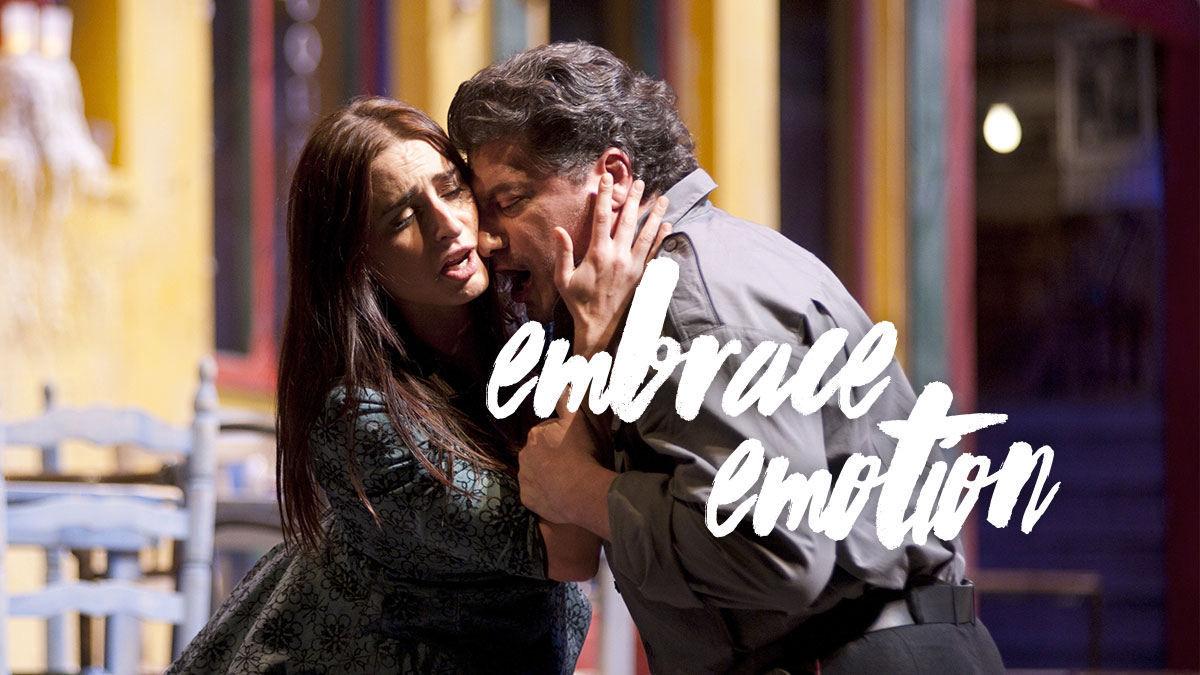
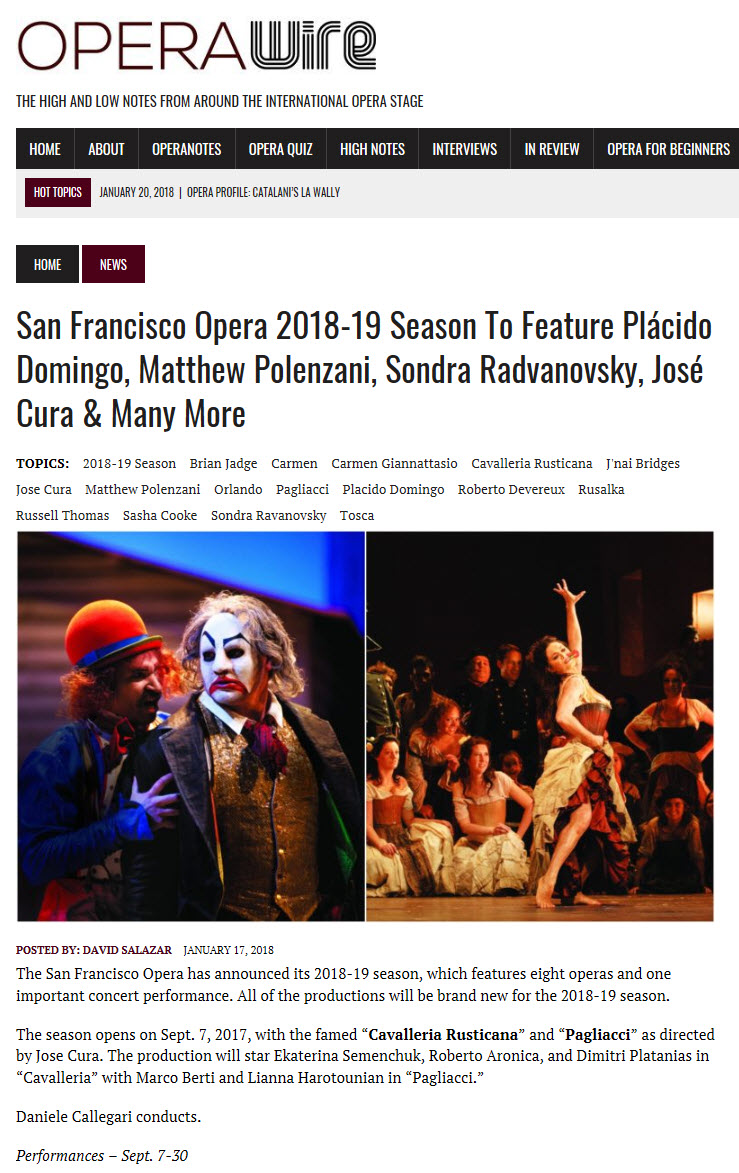
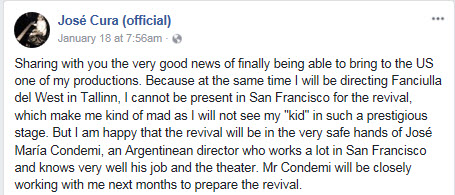
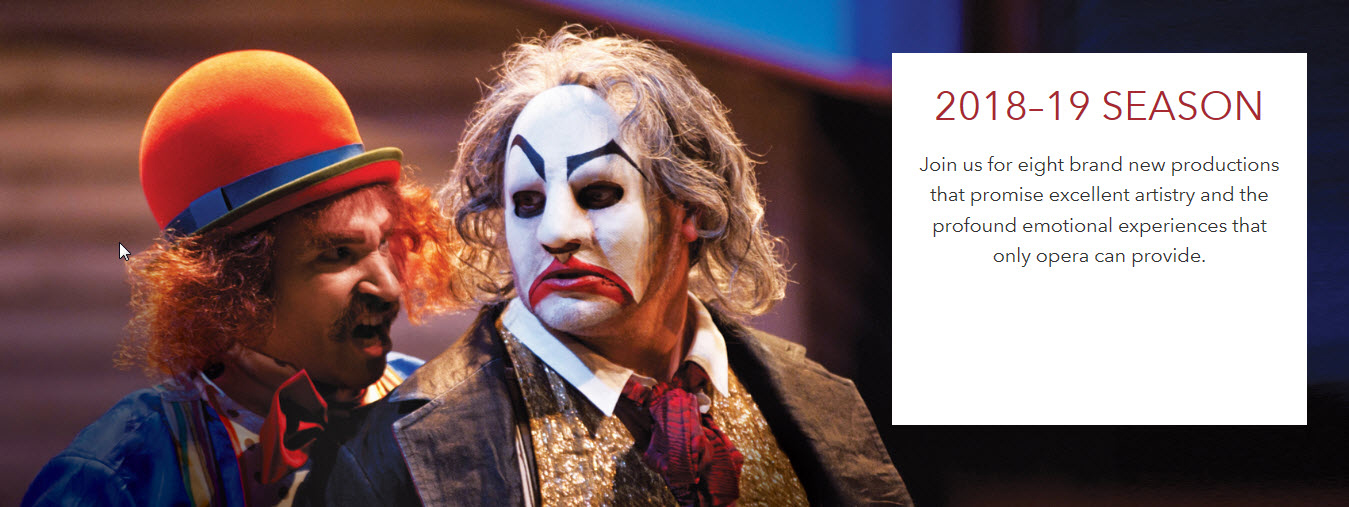
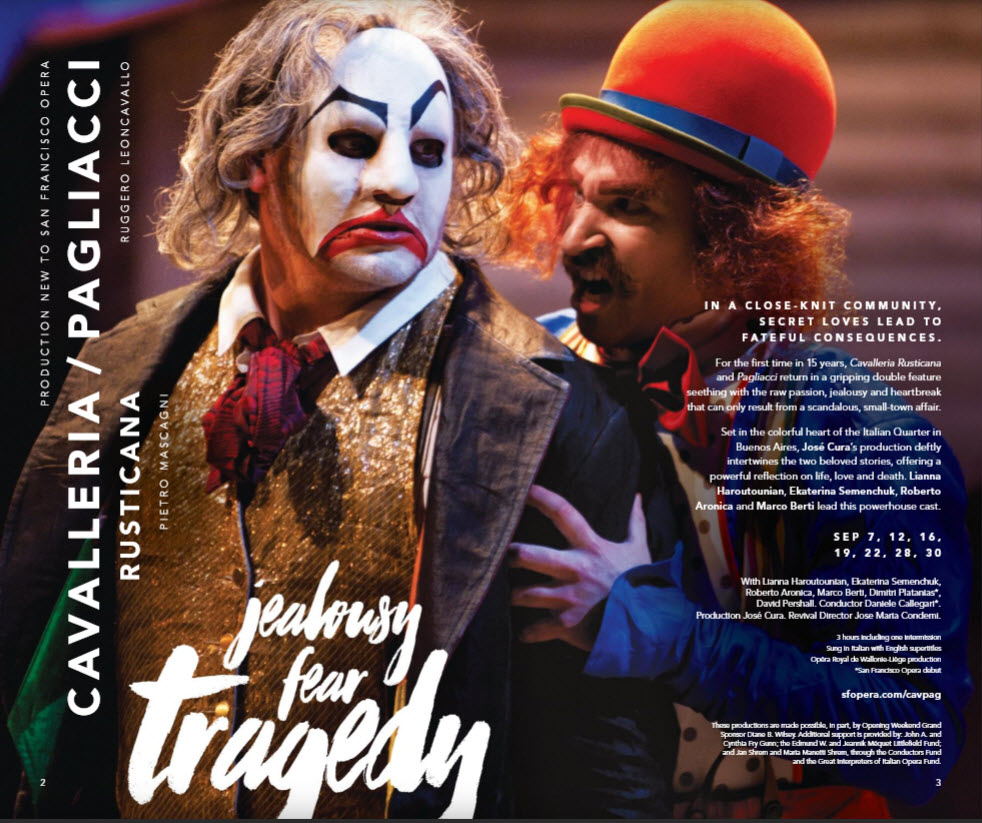
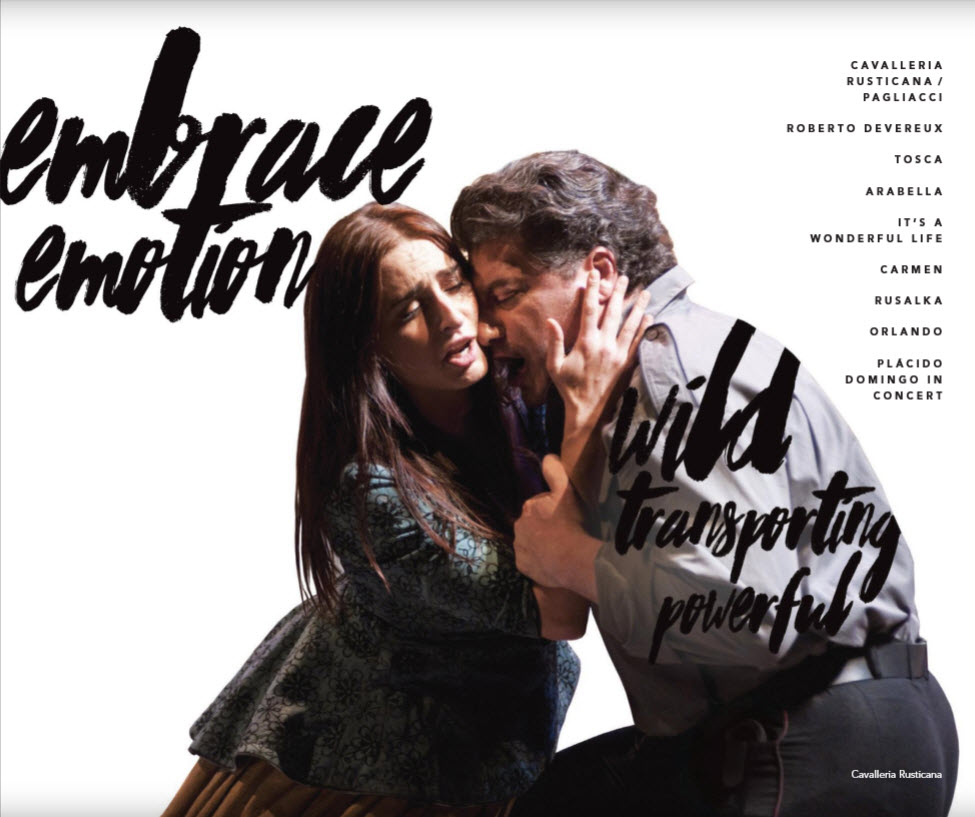
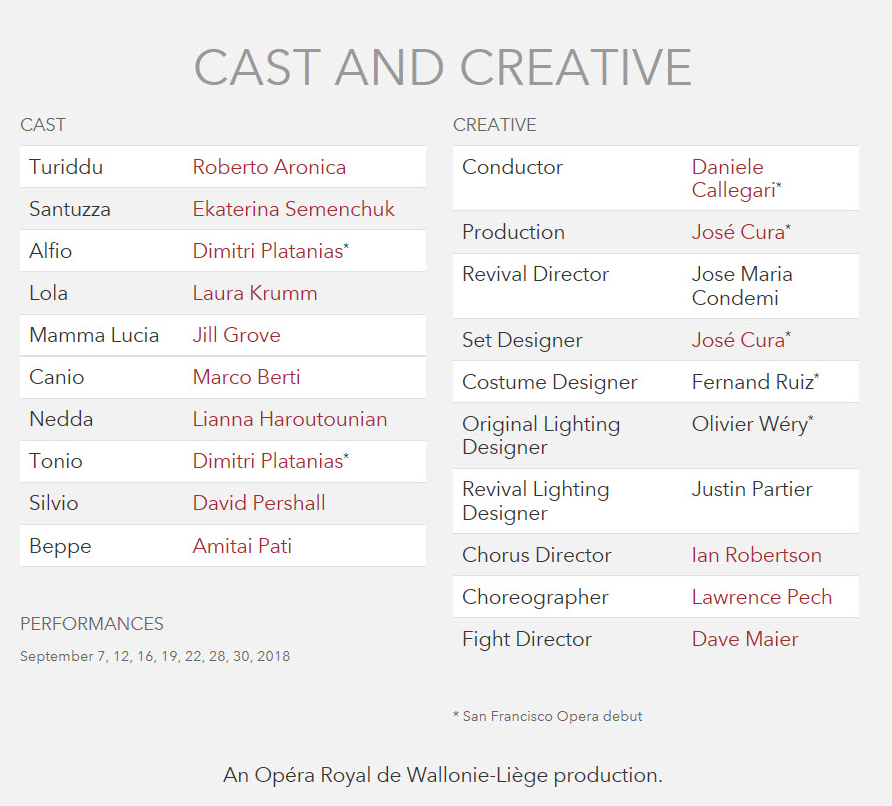
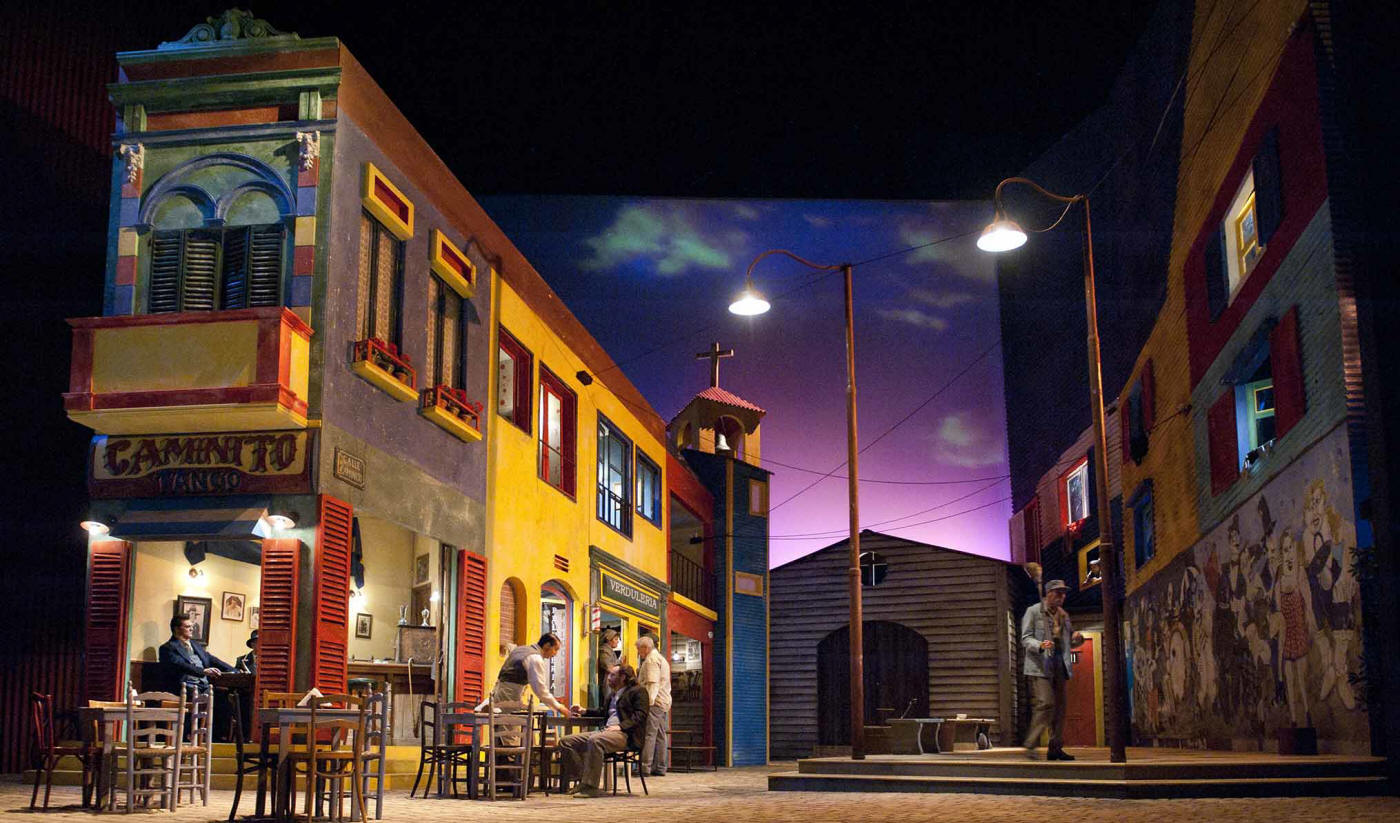
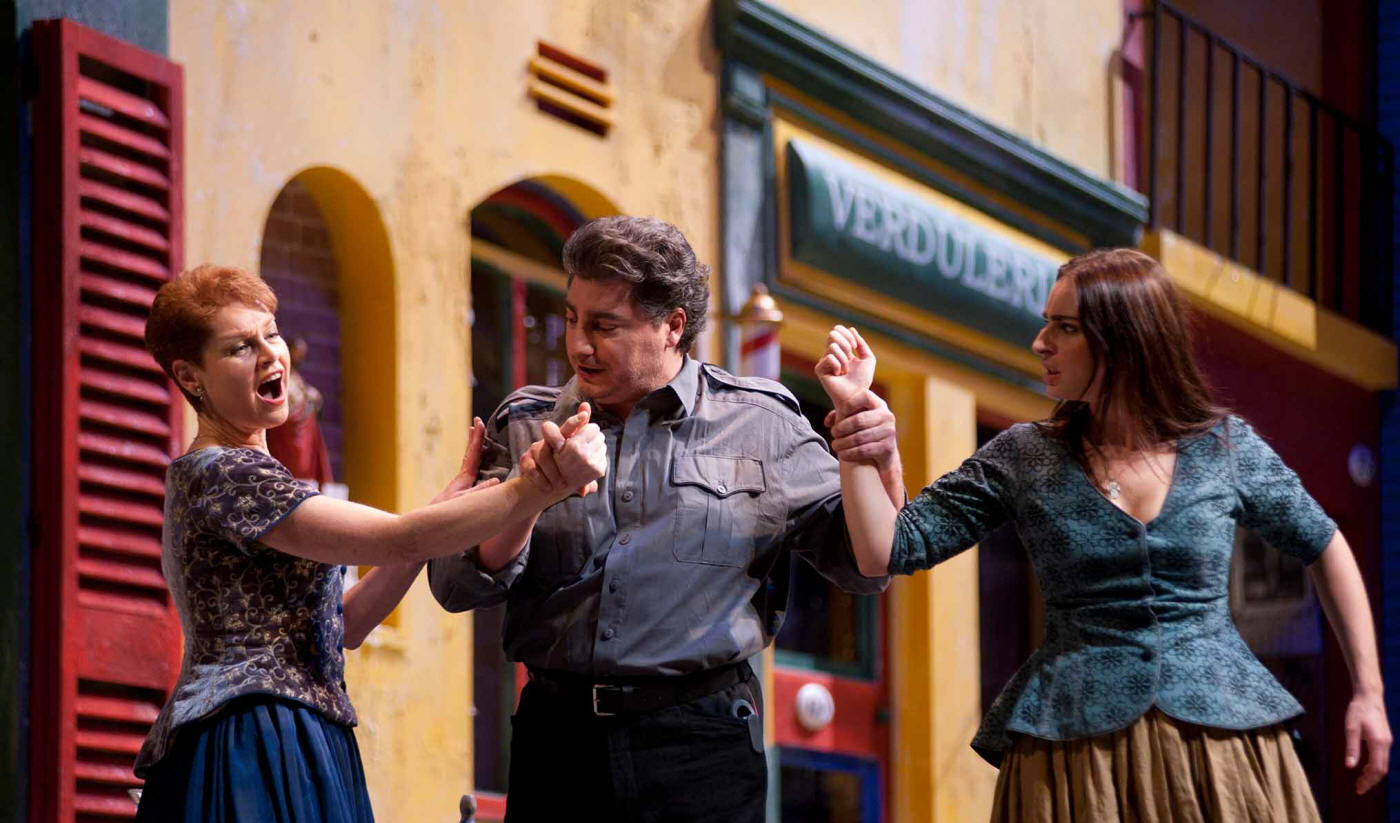
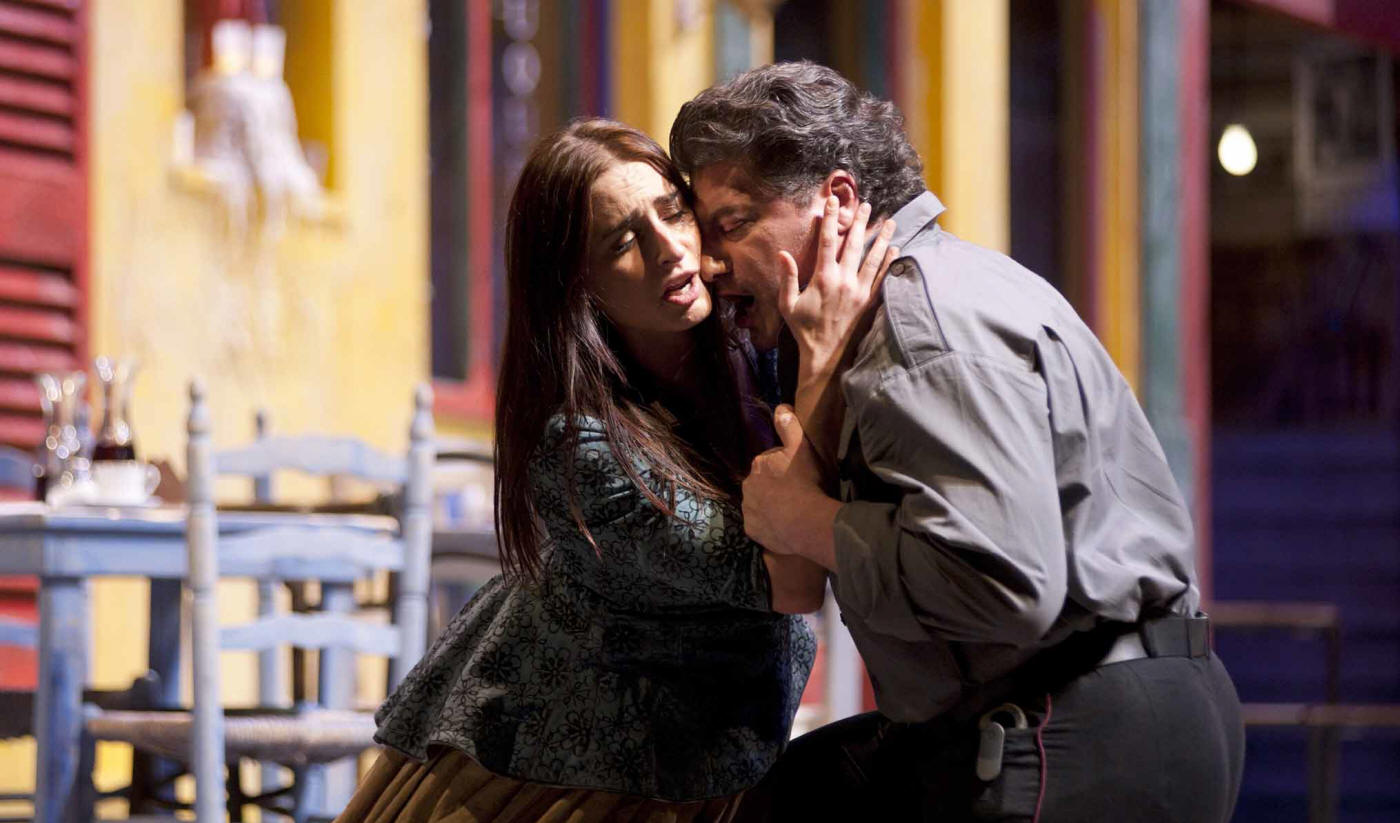
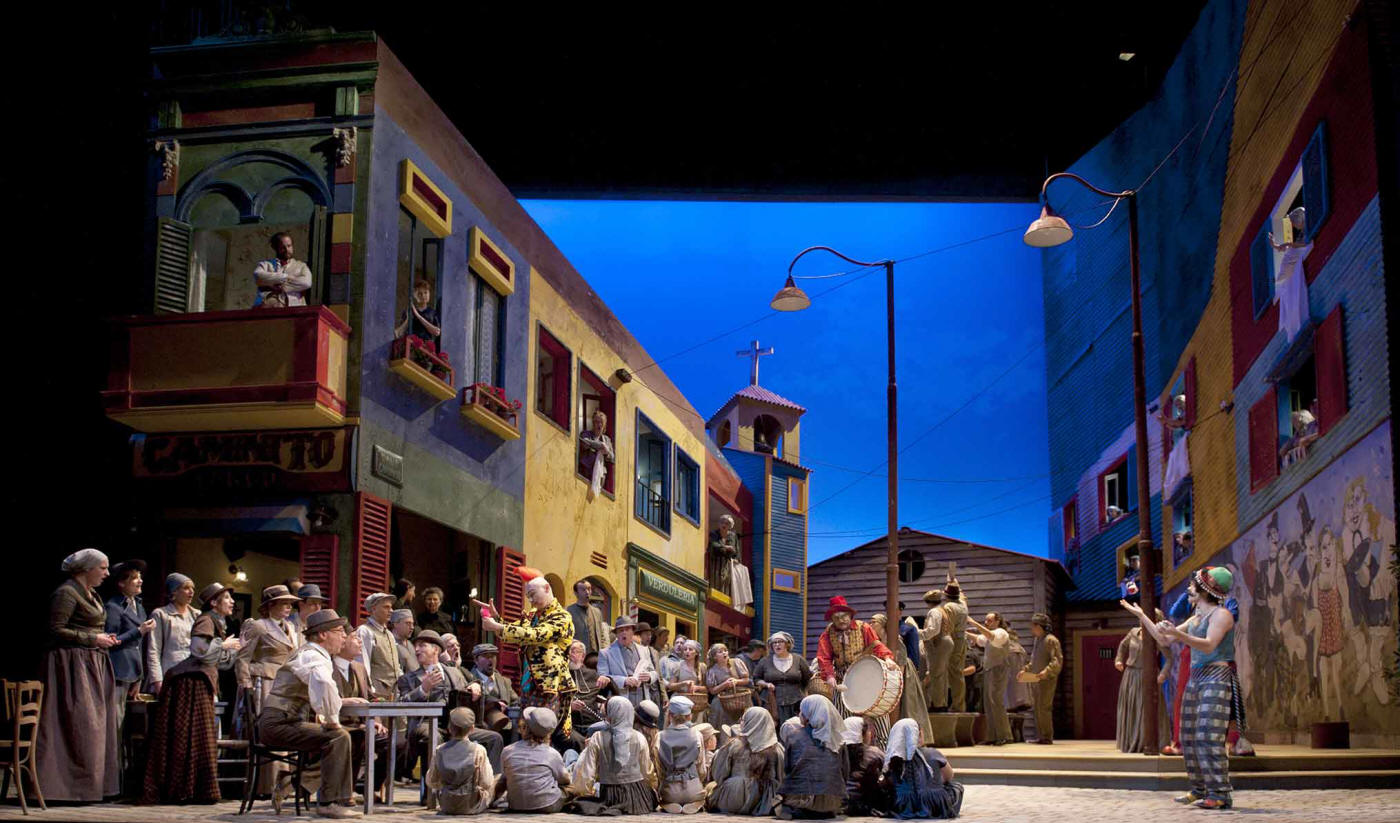
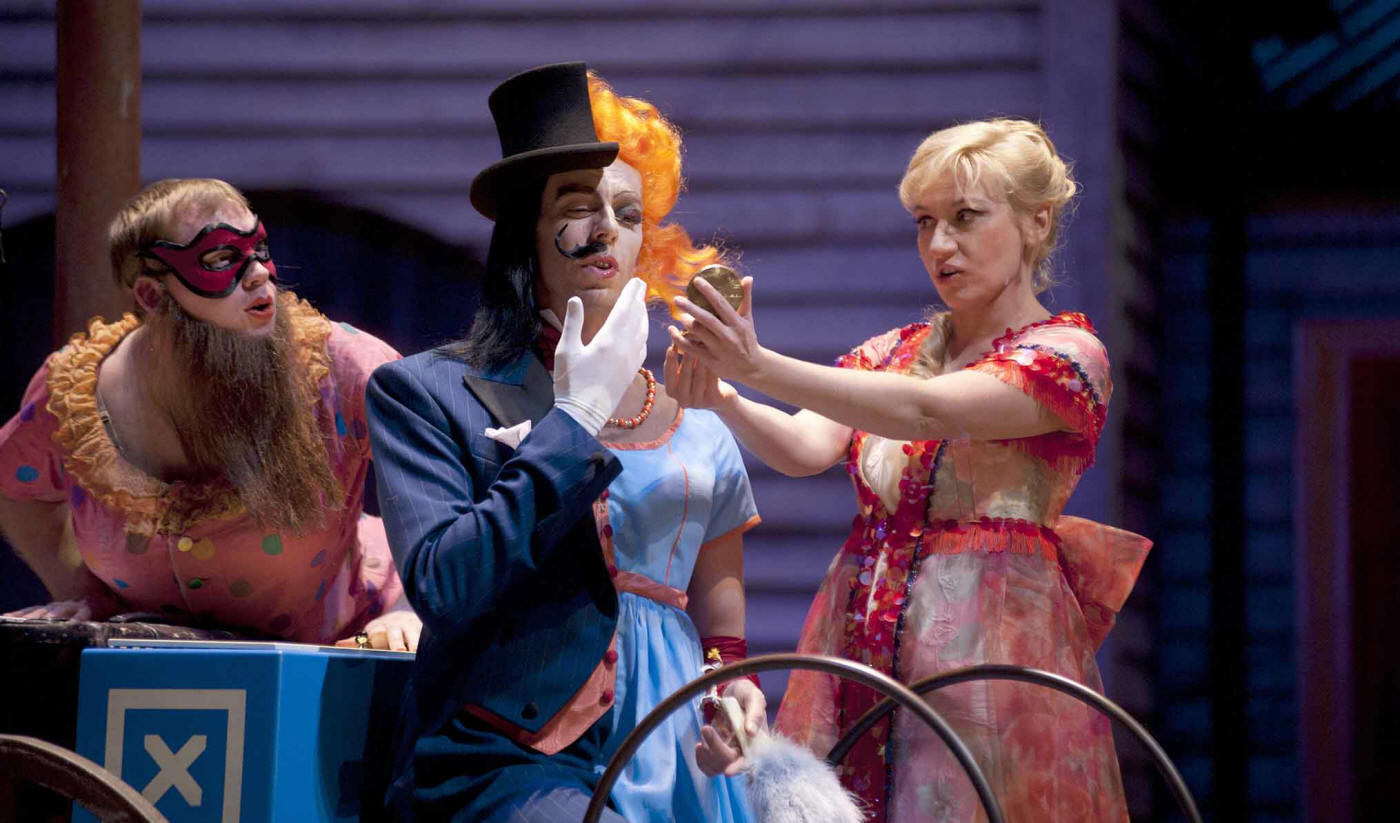
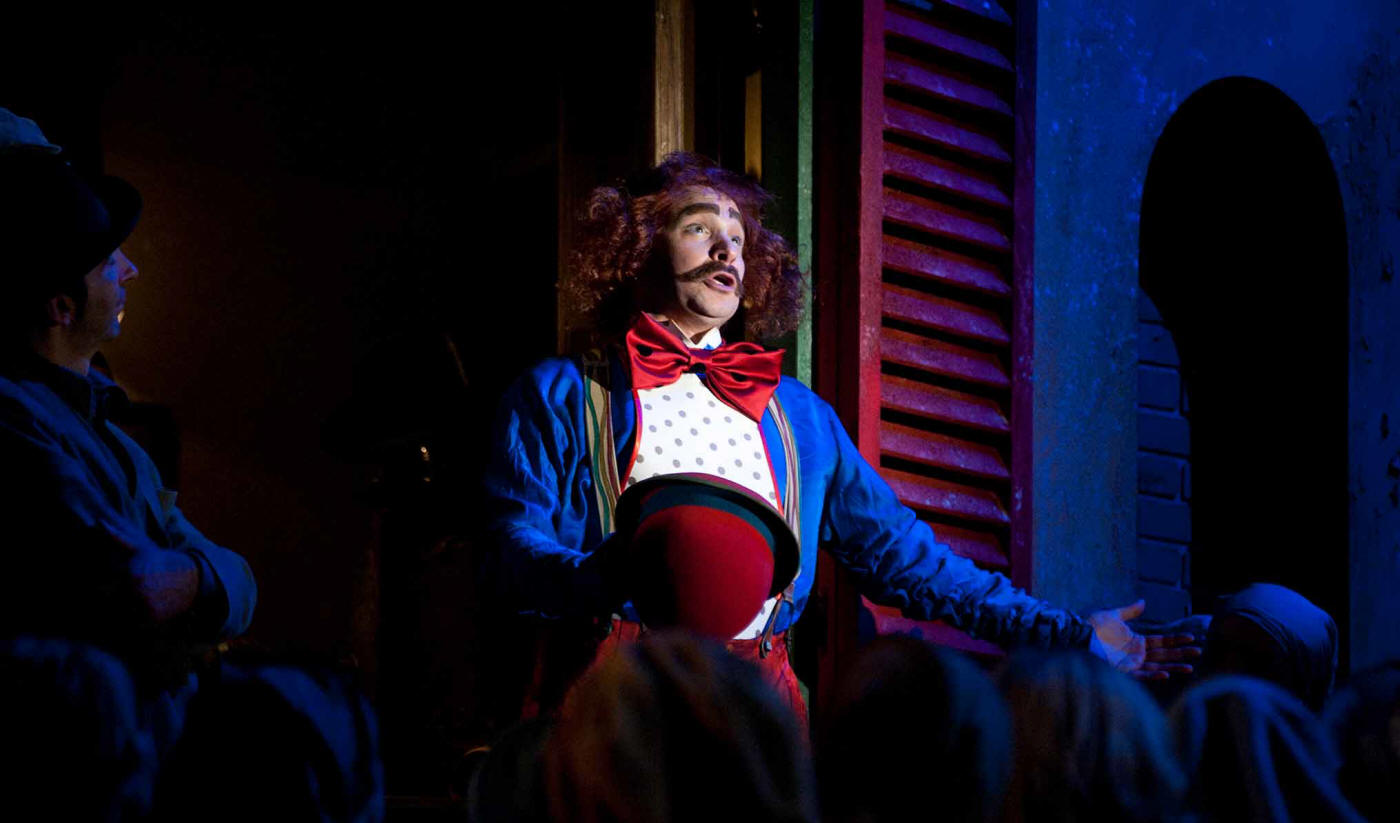
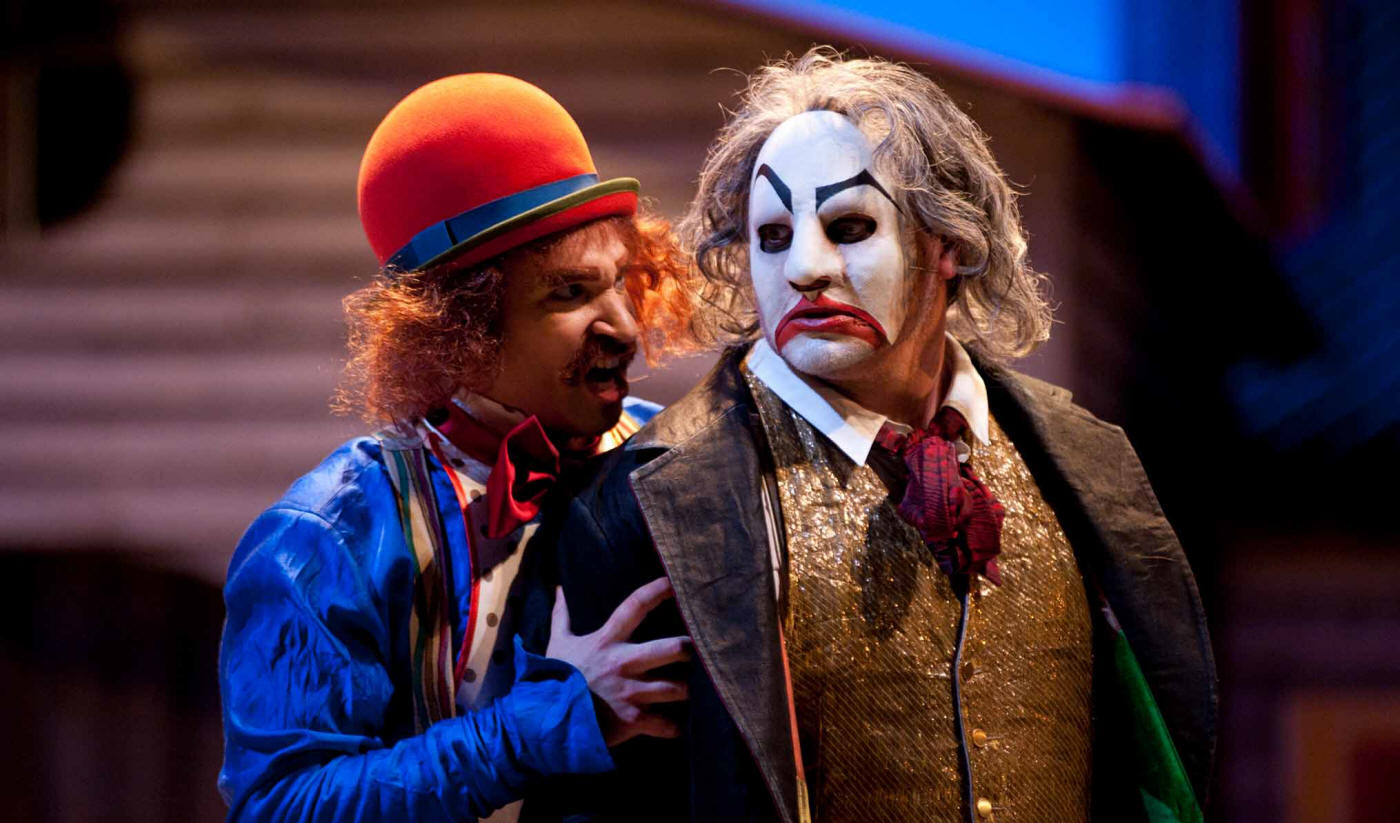
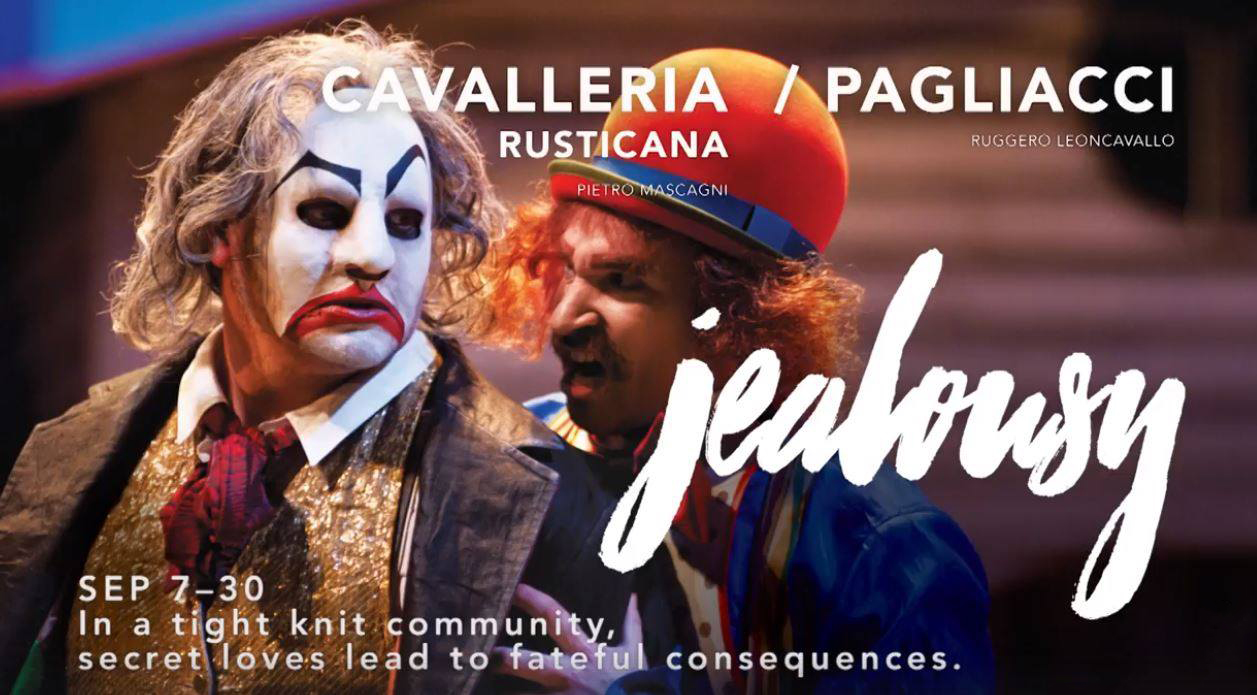
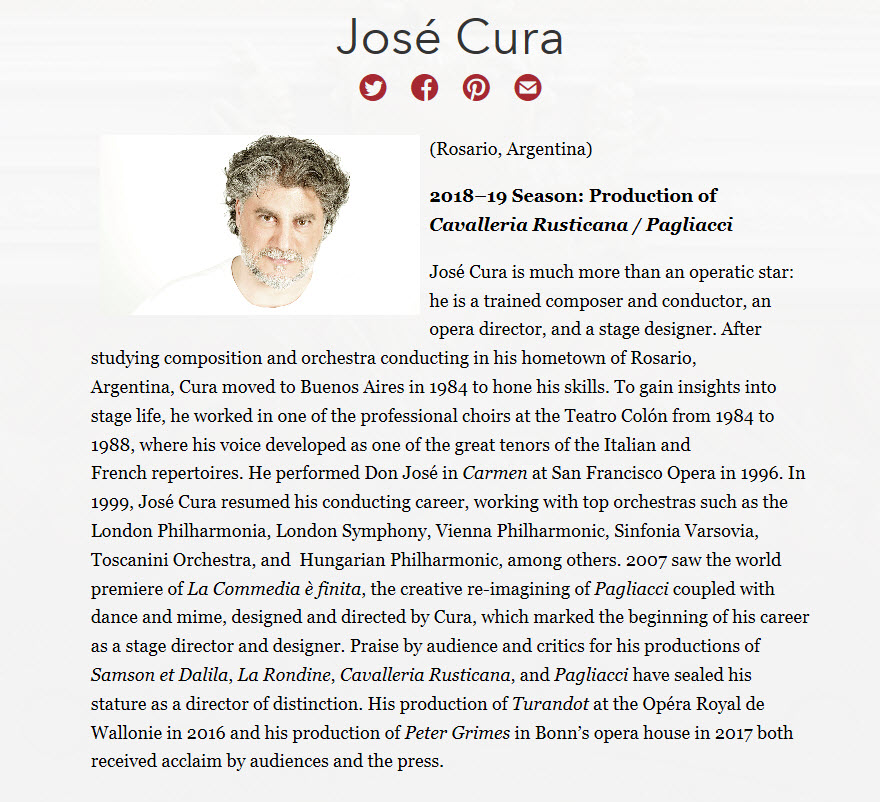
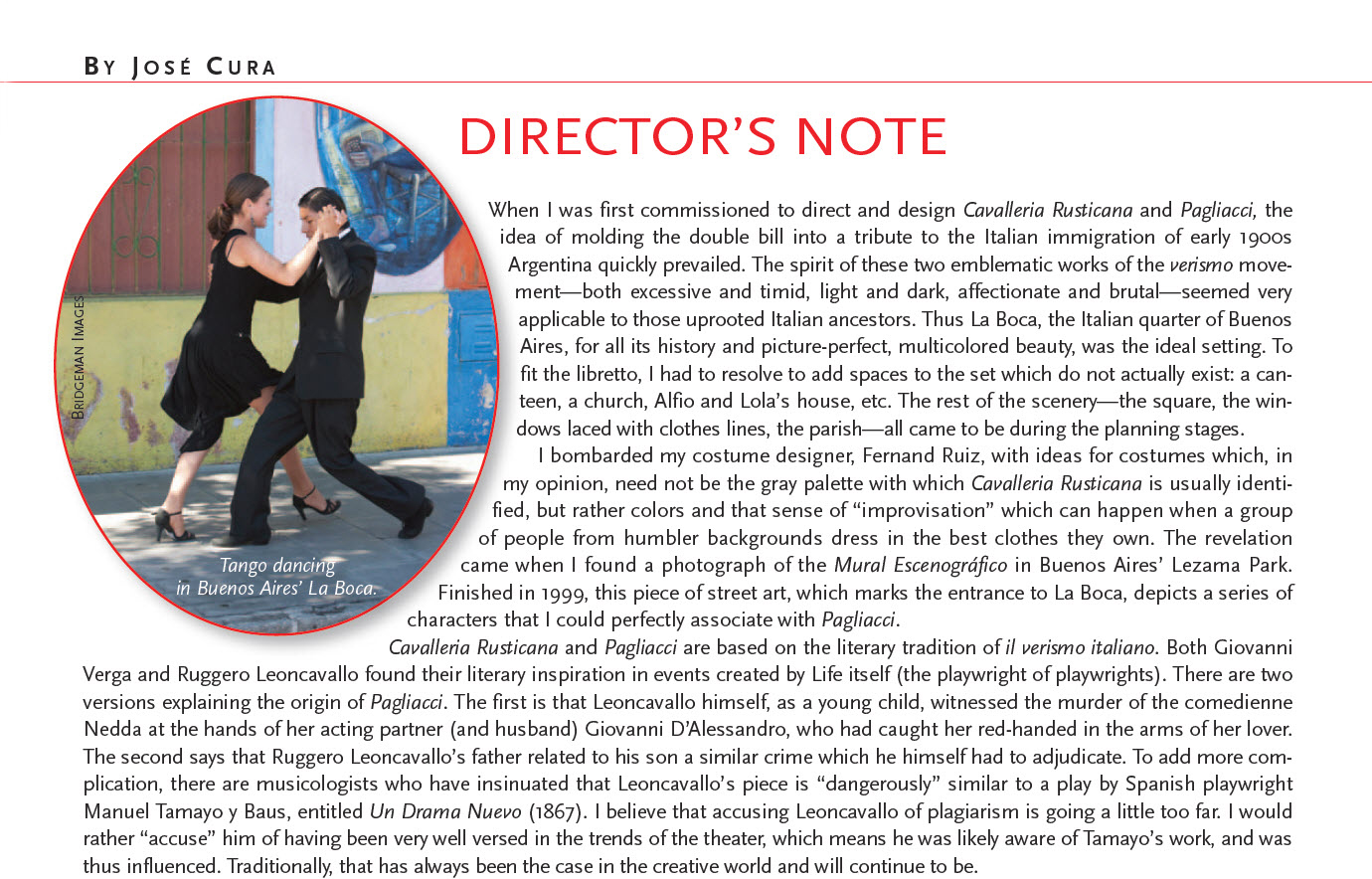
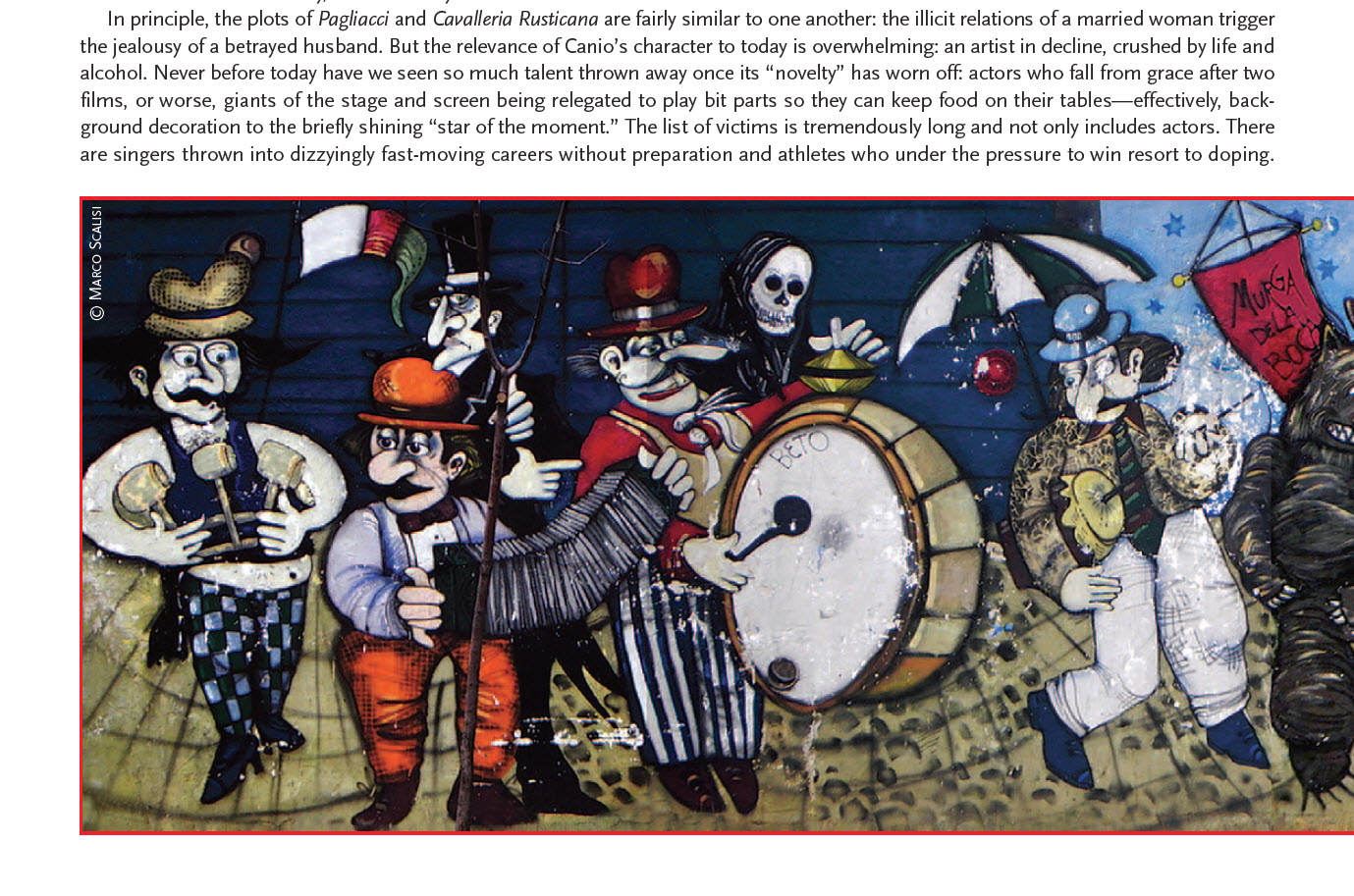
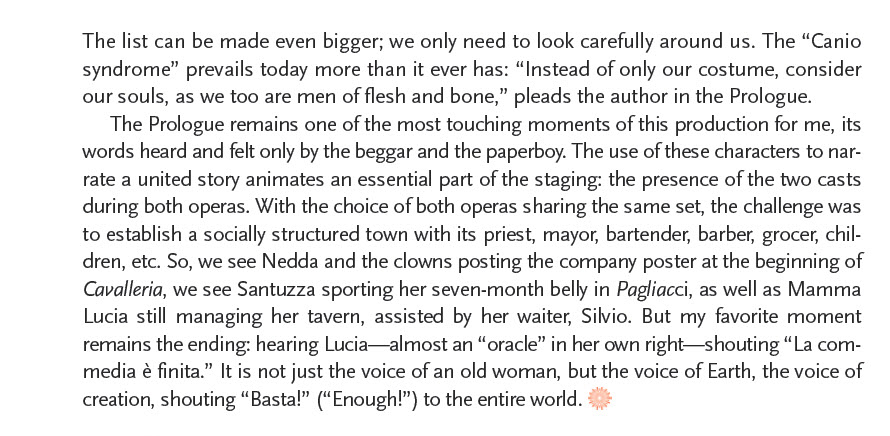
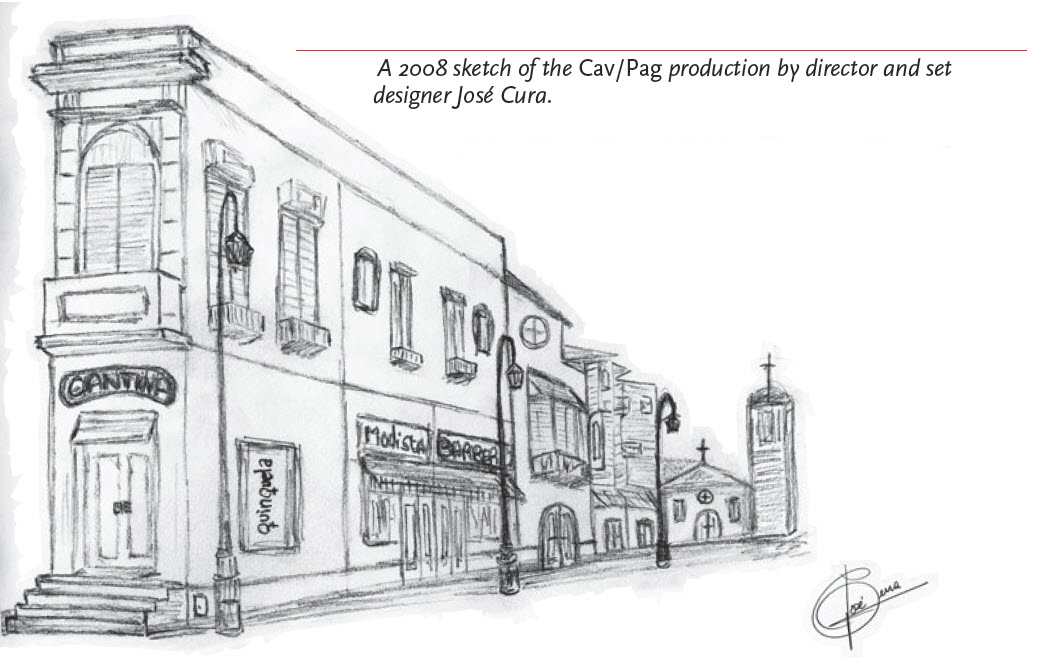
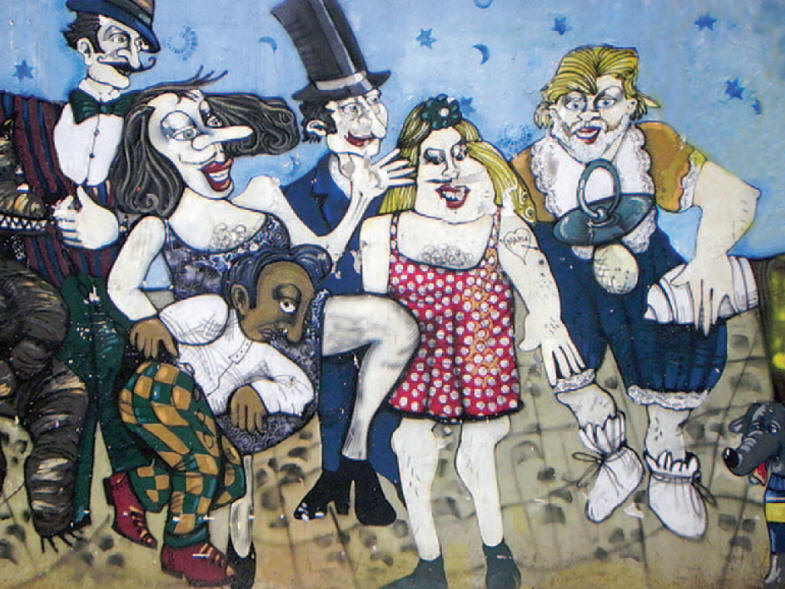


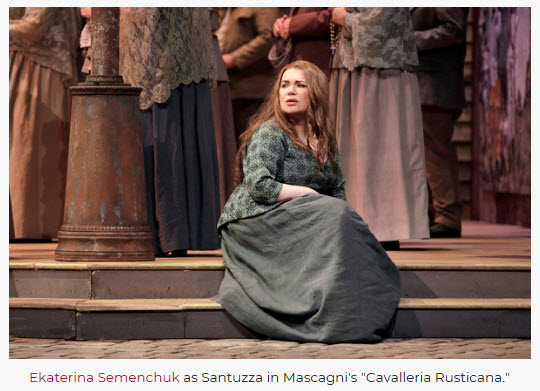
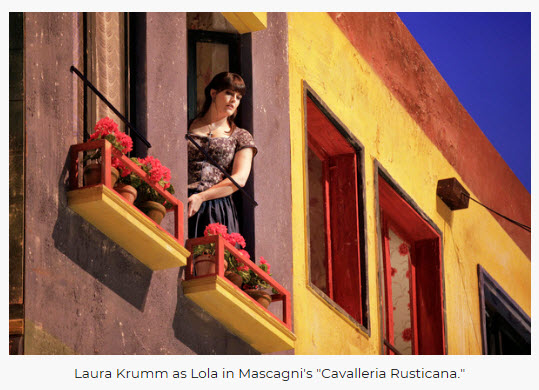
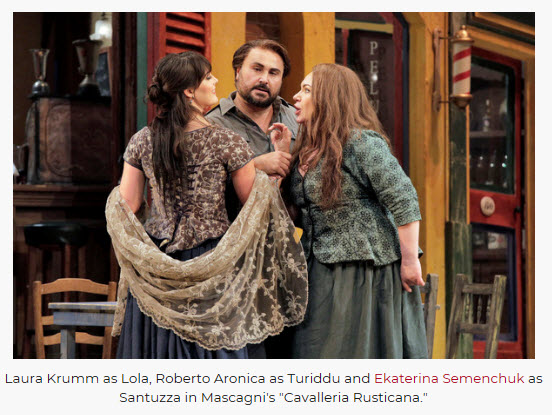
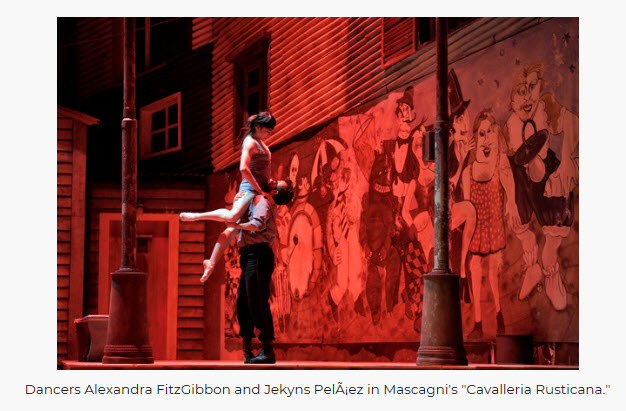
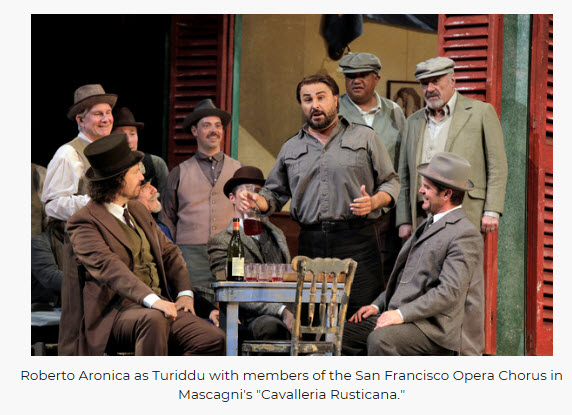
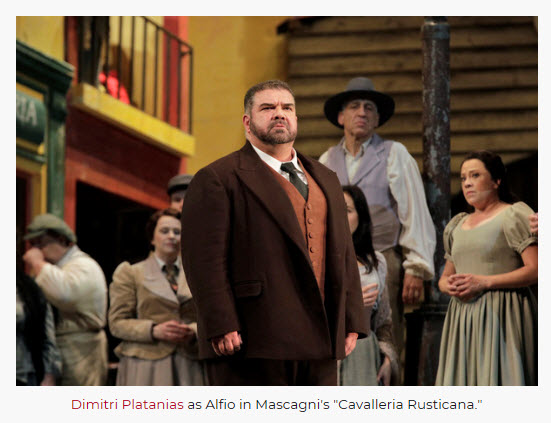
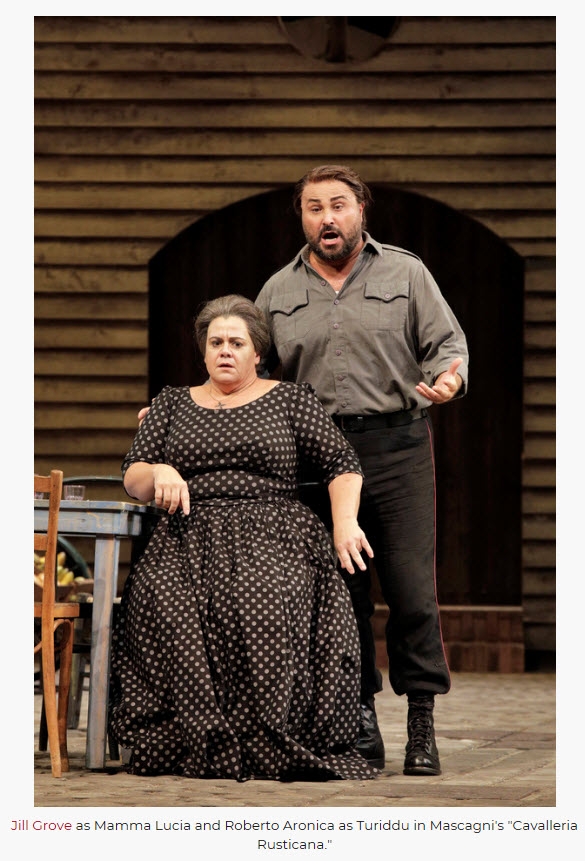
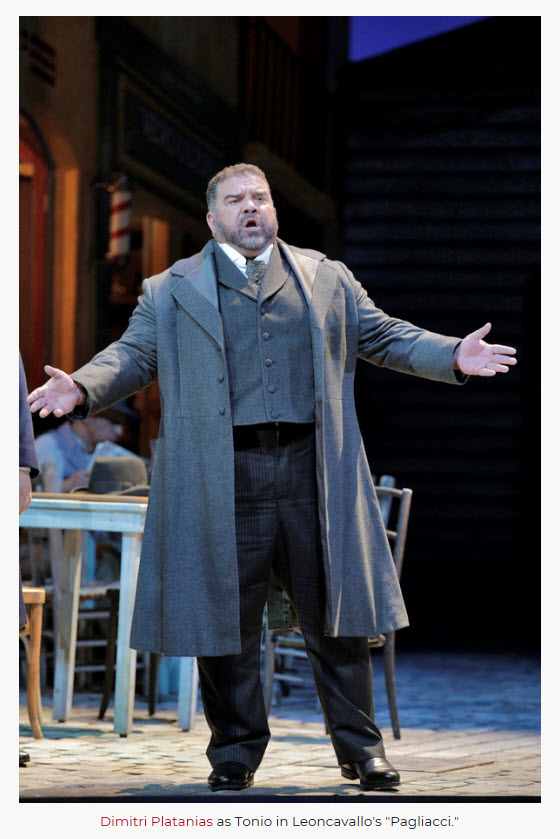
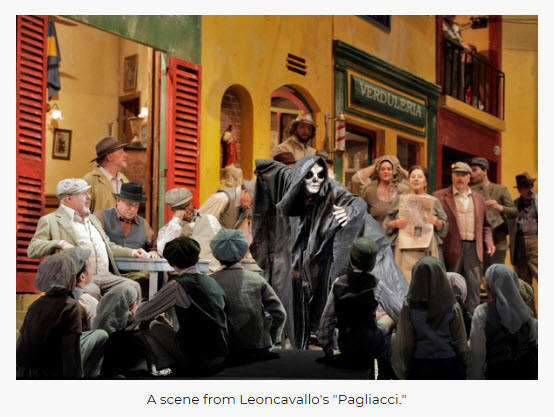
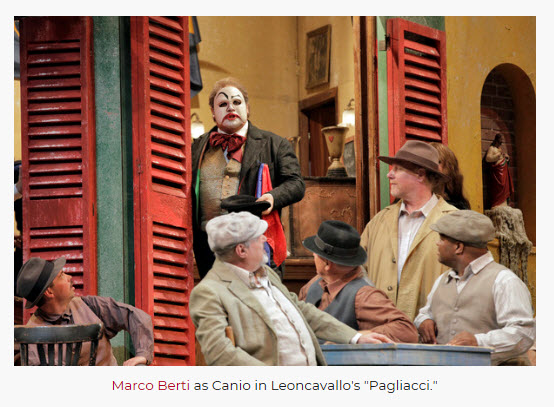
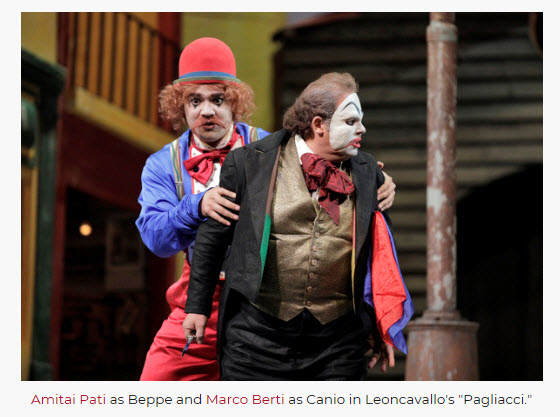
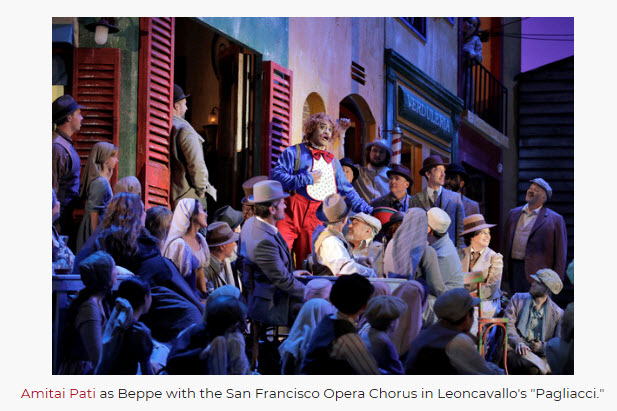
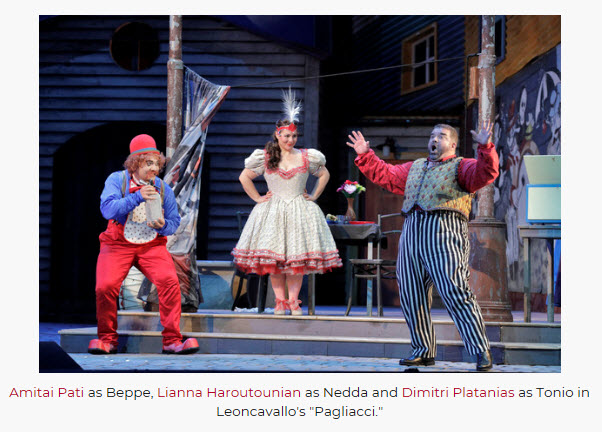
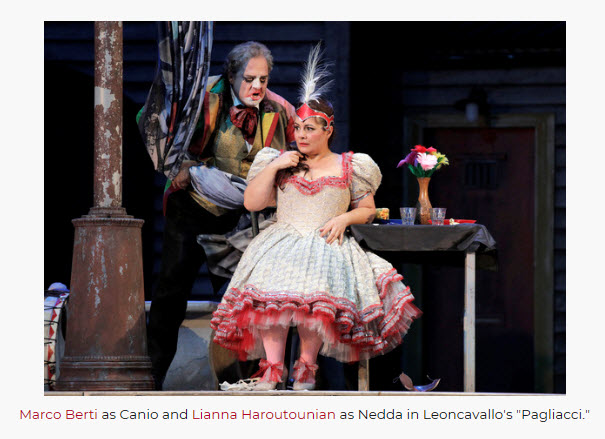
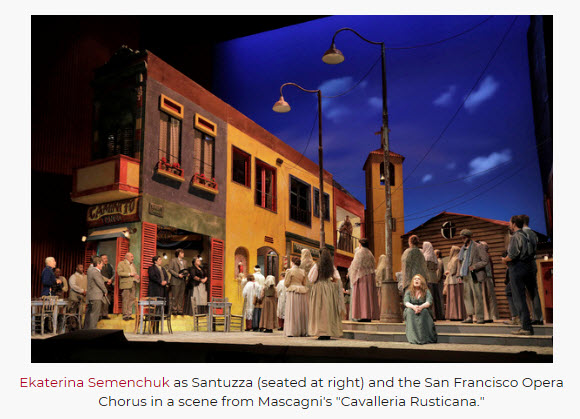
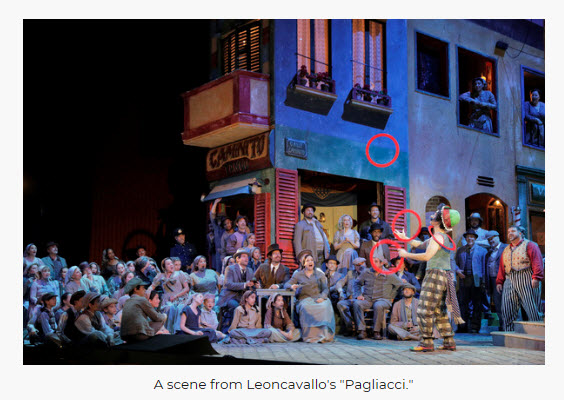
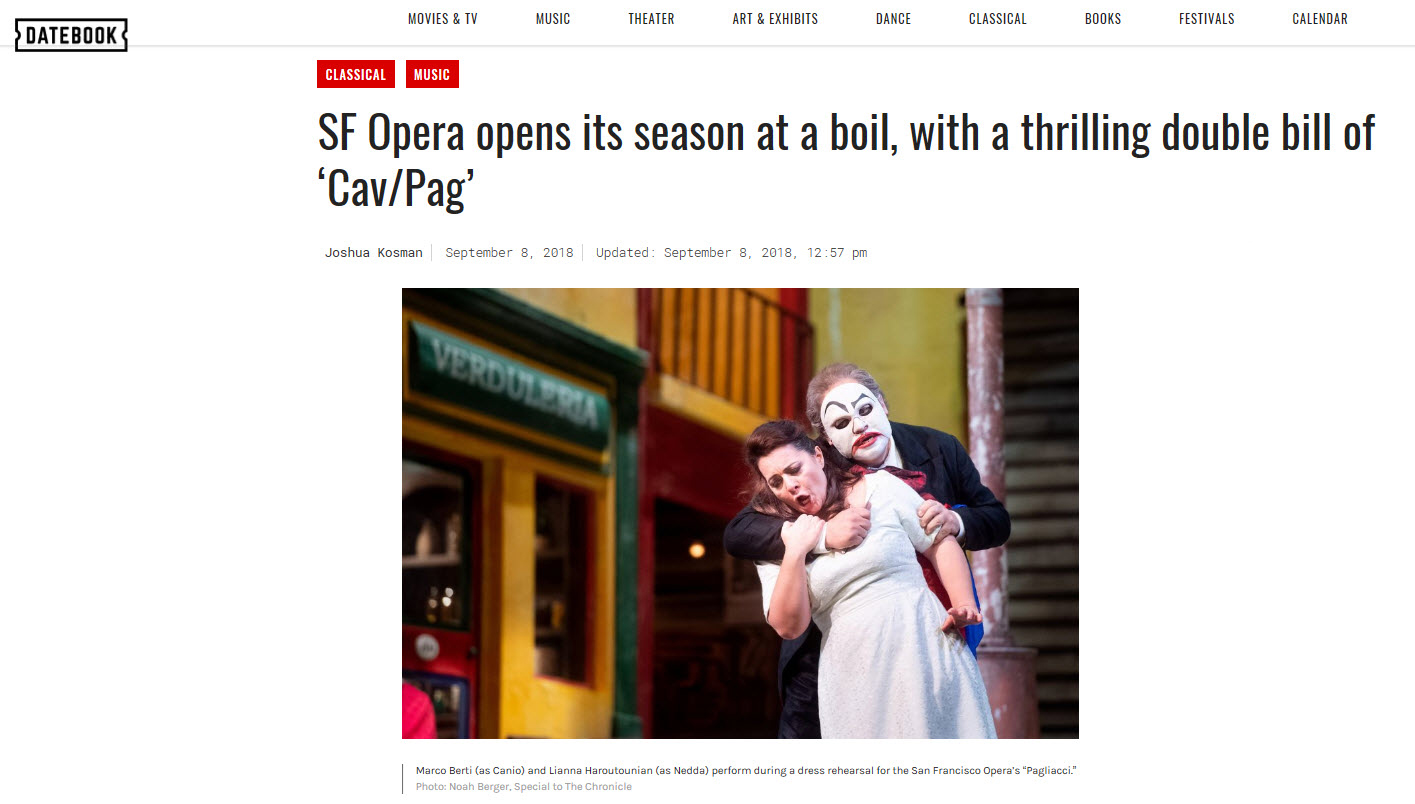

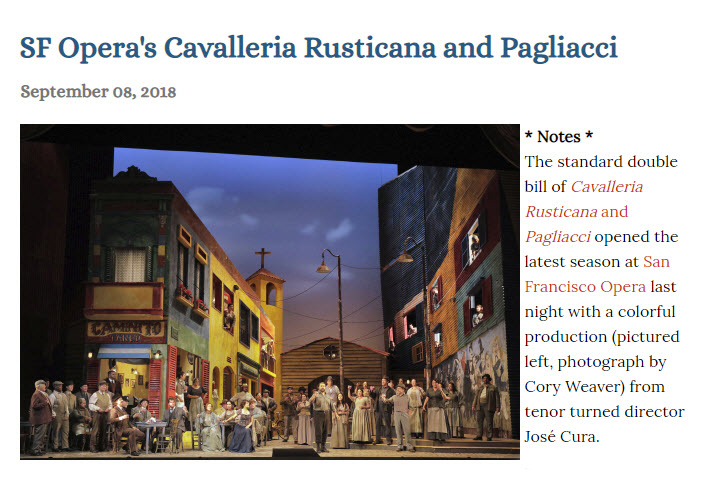
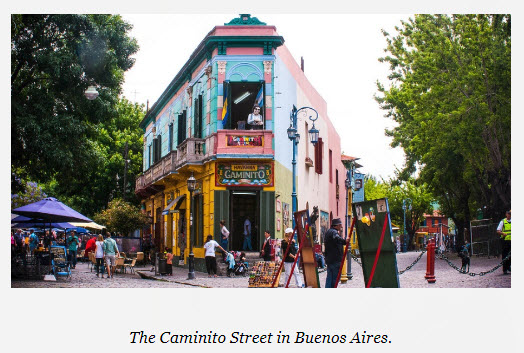
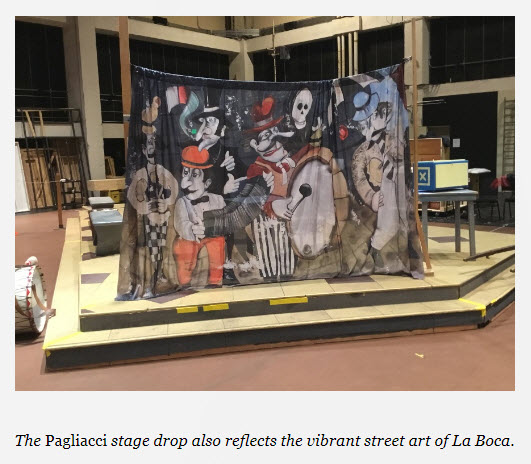
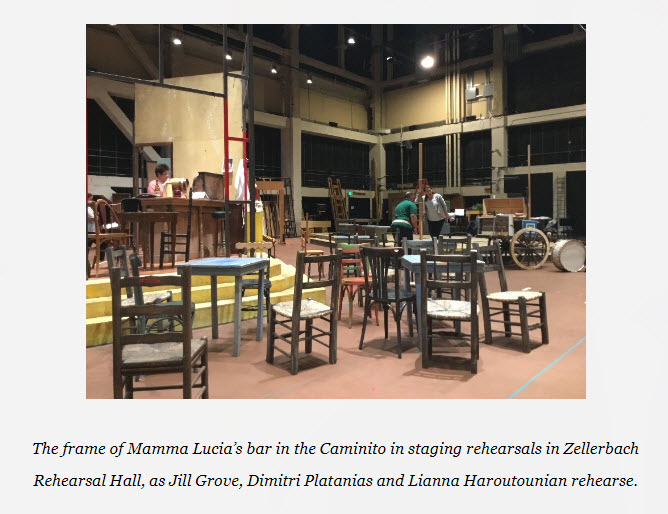
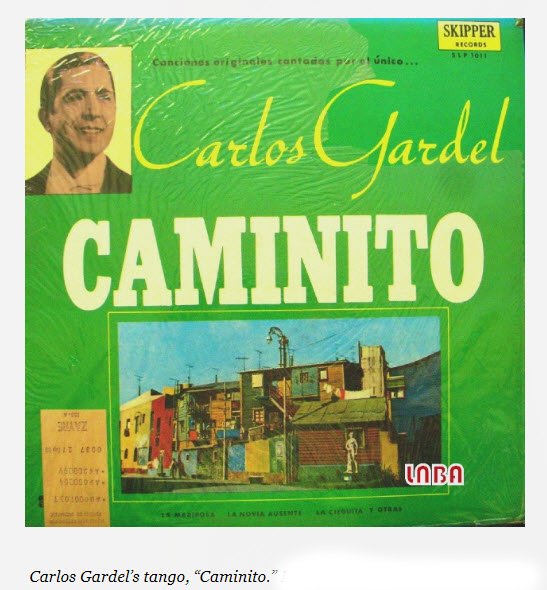
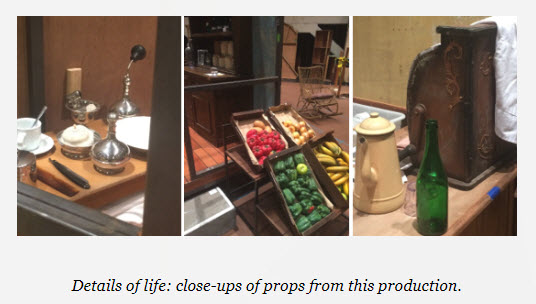
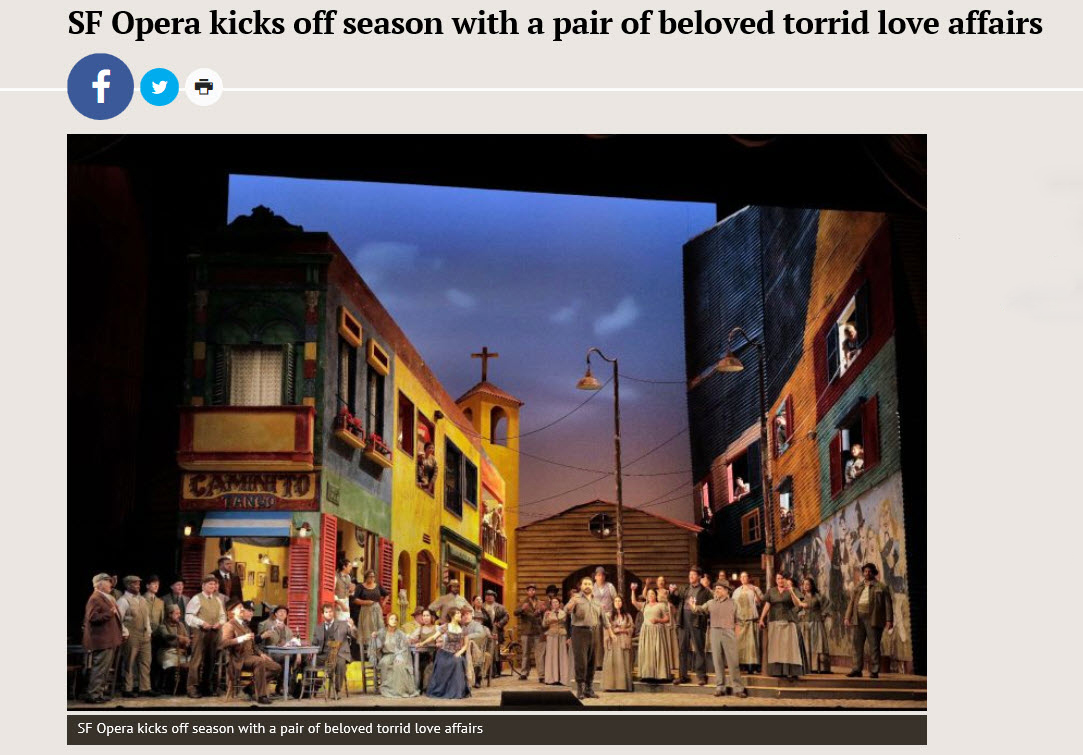
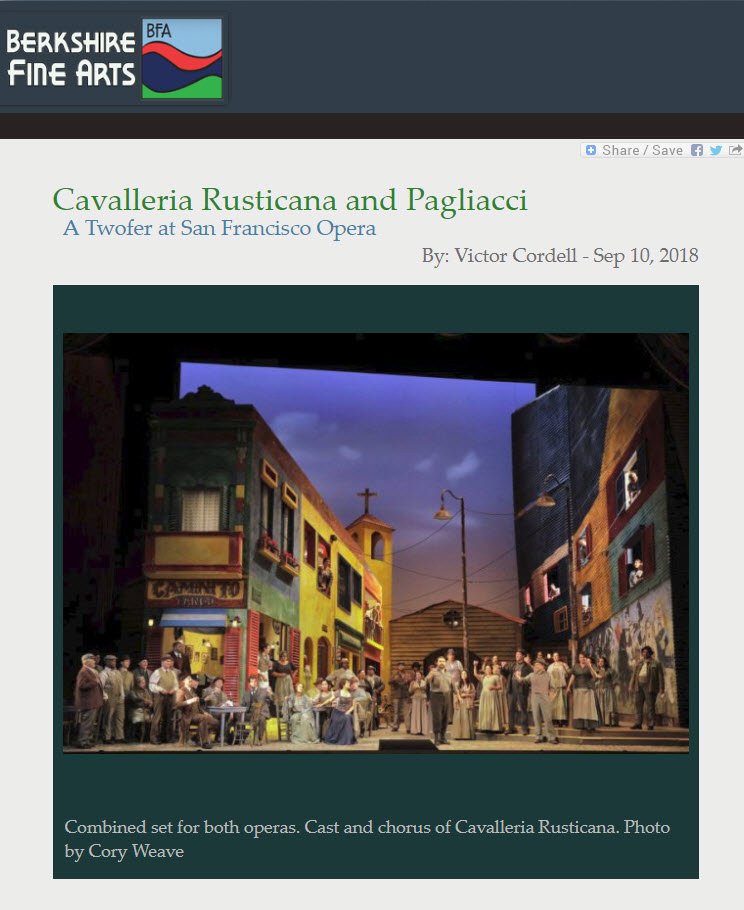
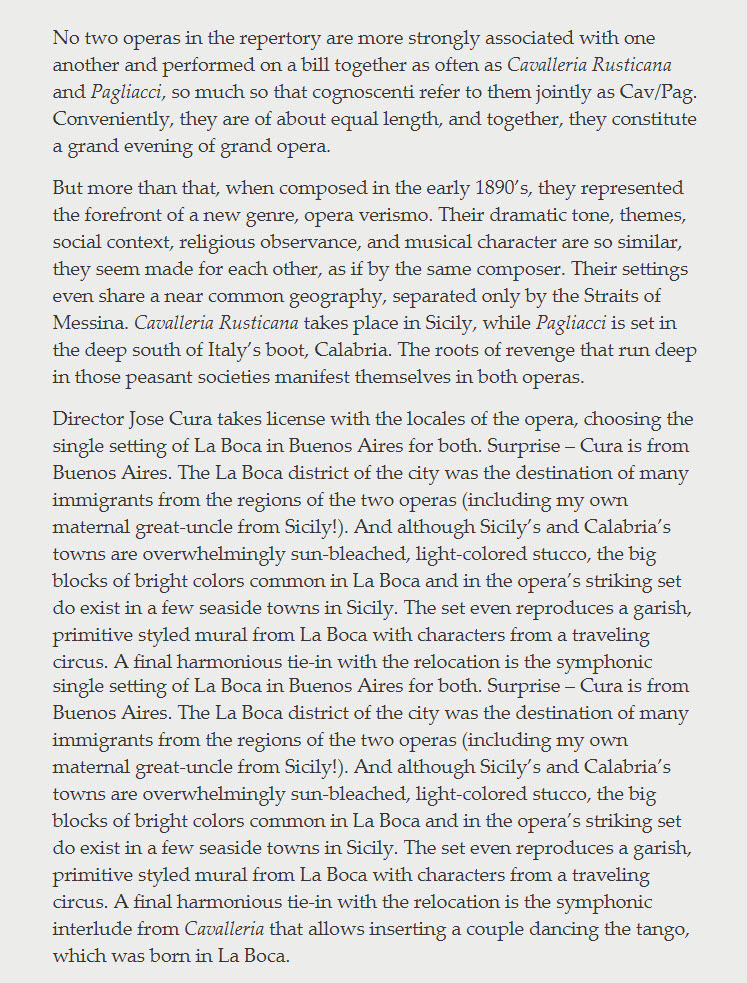
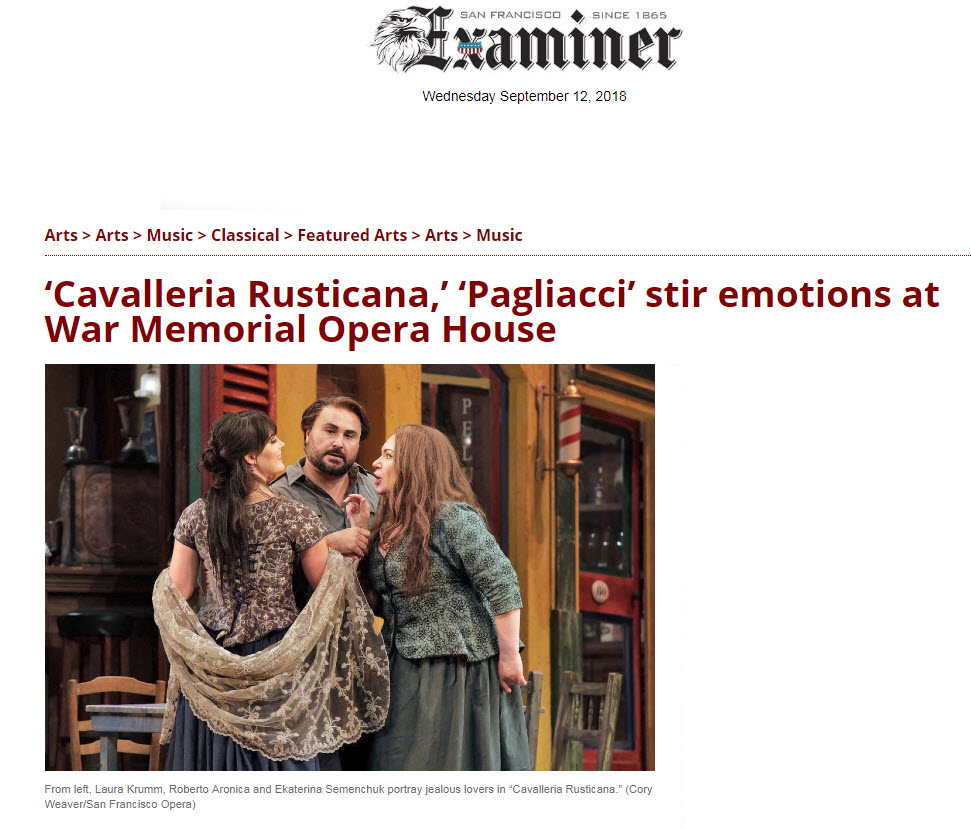
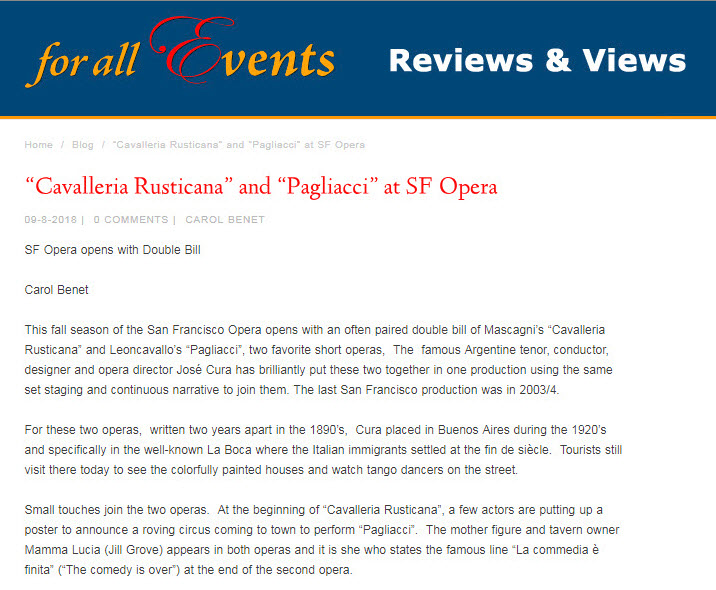
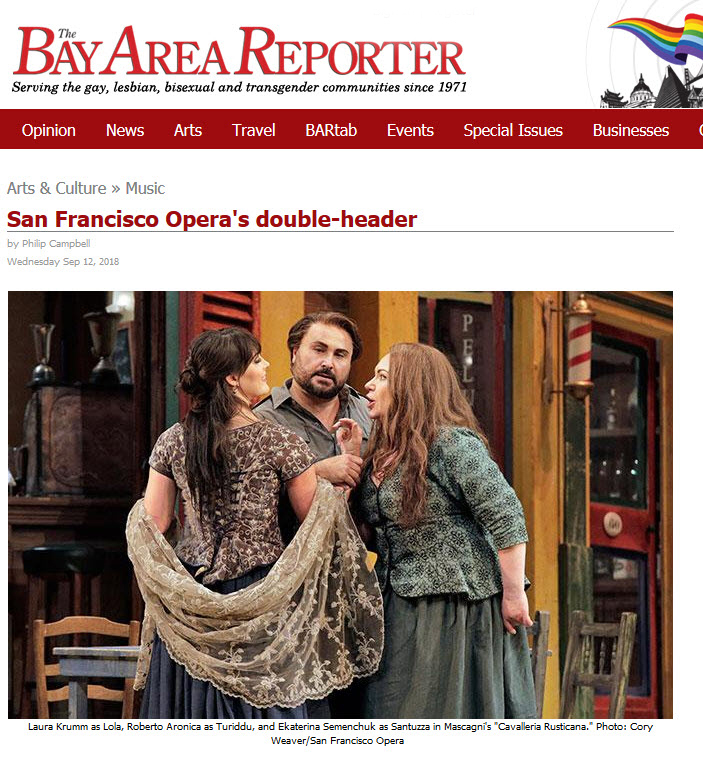
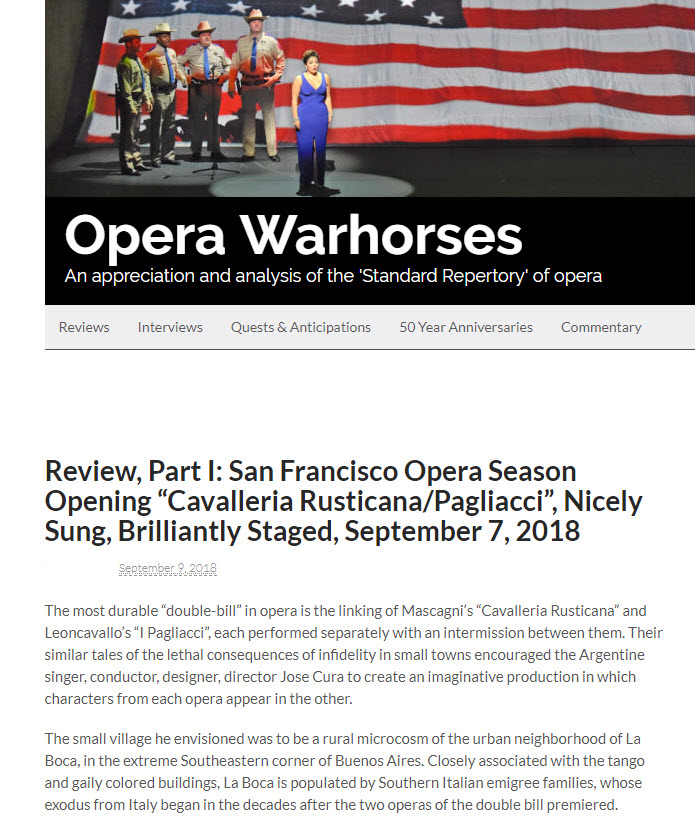

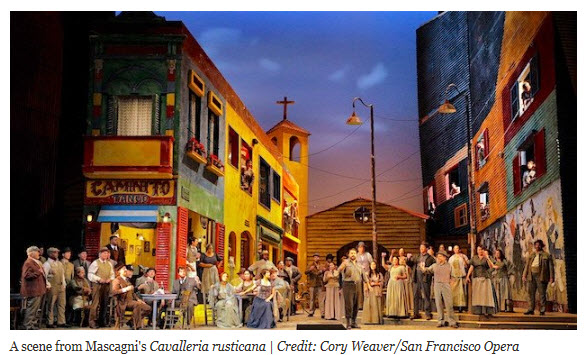
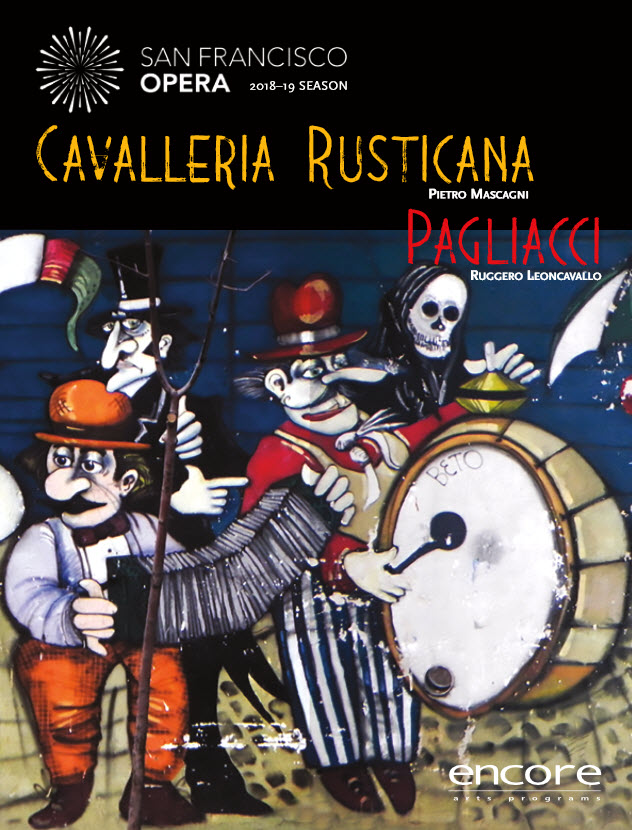

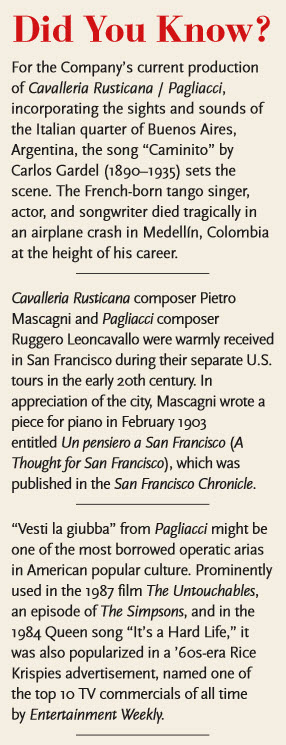
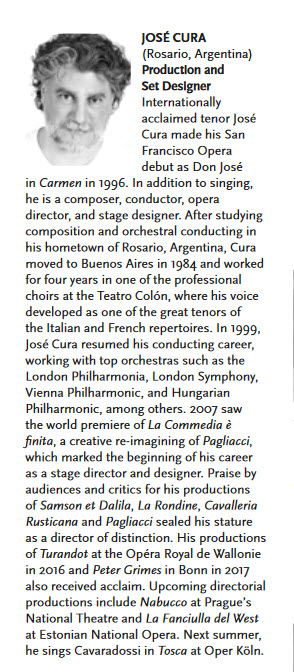

All reviews are personal but...I was never confused about what was happening on the stage as these two operas merged into a continuing saga and I never had to refer to the program to figure anything out.
I certainly didn't find the setting of either opera to be overly static simply because there was a single set; rather, I thought it emphasized the fact that all tragedy is local. As for people just walking about or peering out windows--what is more verismo that neighbors inserting themselves into business that doesn't concern them? I thought that was a perfect slice of life touch.
I loved the vibrant setting, the attention to detail, the heartbreak of Canio, the endless losses of Mamma, the promise that life continues in spite of everything as evidence by Santuzza's belly. There was an underlying understanding of the story and the characters that is so often missing in modern opera production that I found refreshing. I can only applaud San Francisco opera for bringing us this production and congratulate José Cura on his artistic vision. I'd be happy to see more of this sort of staging.